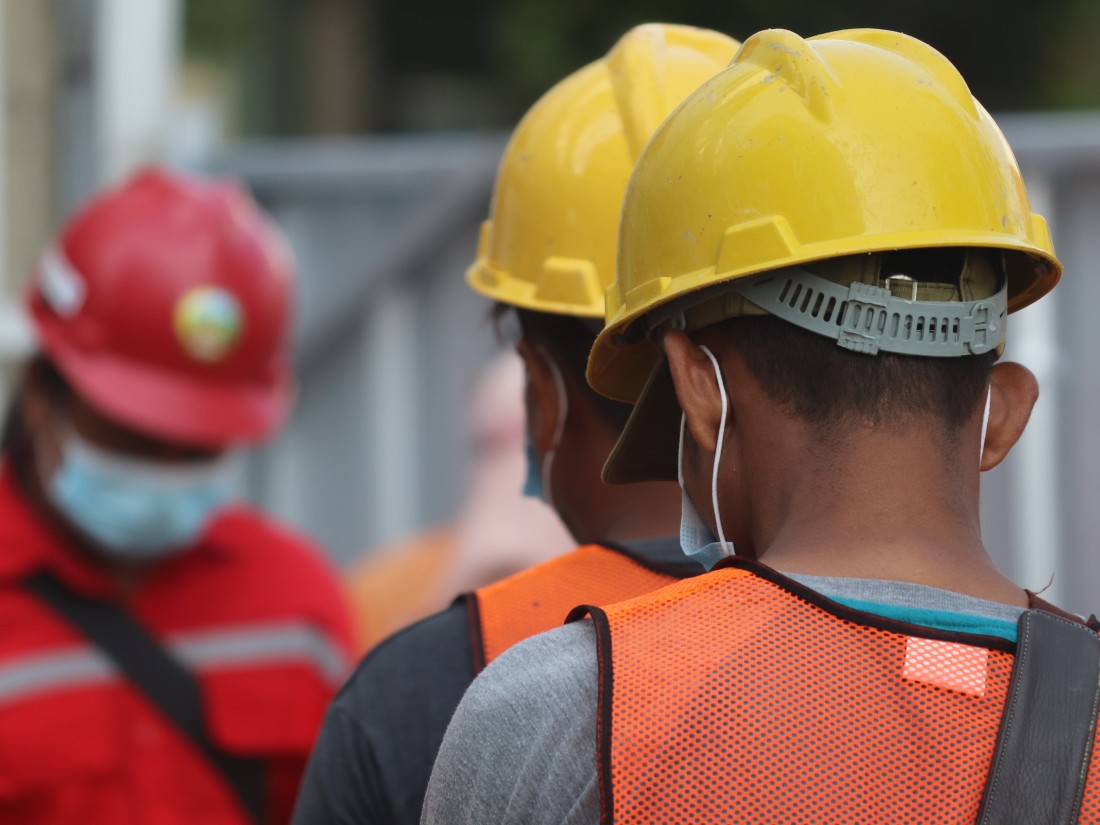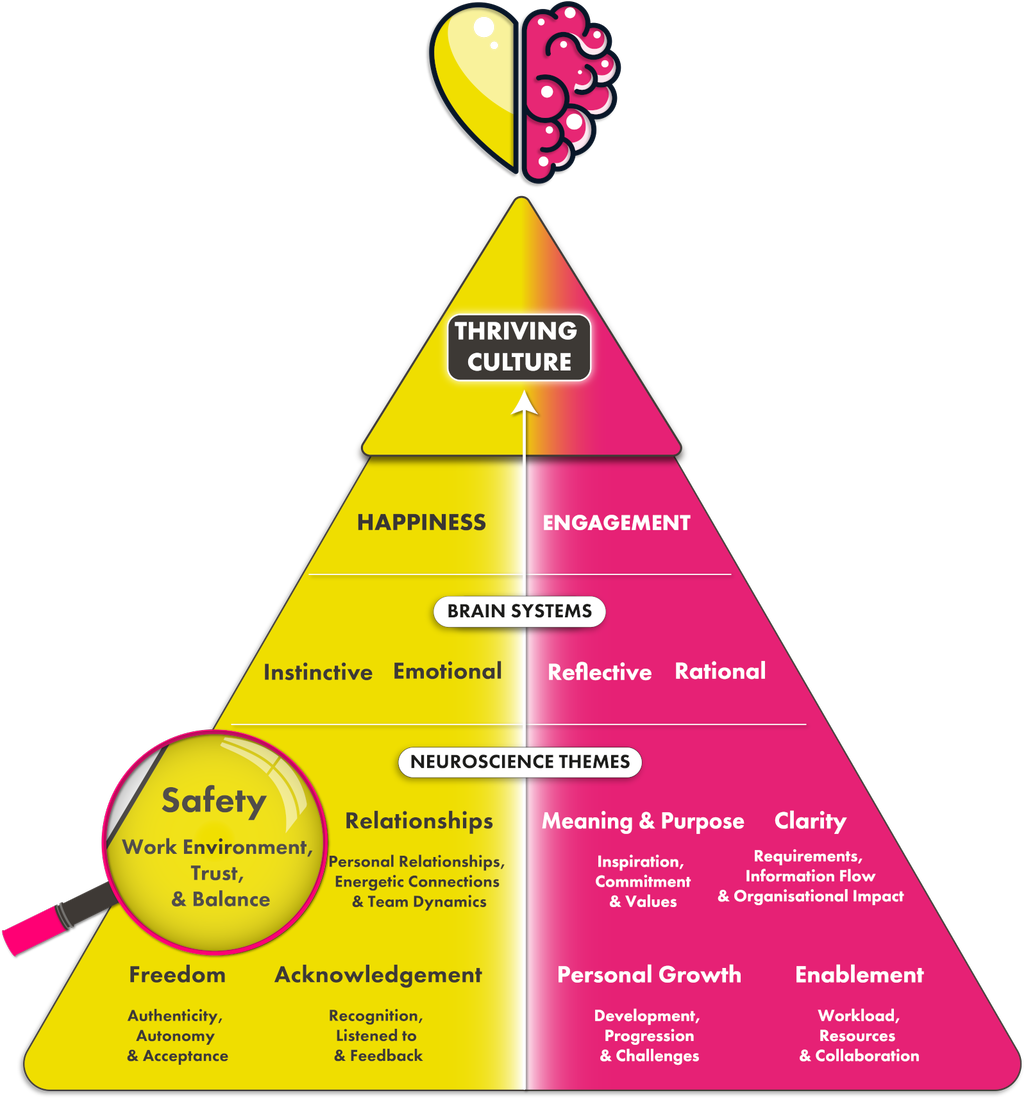Menu


Being comfortable in our work environment supports our feelings of psychological safety and helps keep us happy. This is linked to the Instinctive brain system in our neuroscience model.
If you’ve just landed on this page, we recommend reading our introduction to brain systems and the neuroscience themes for better context. Otherwise, read on for everything you need to know about why your work environment is so important for workplace happiness.

Safety is a basic human need, which has evolved and grown to include psychological and emotional safety. The instinctive feeling of safety applies to our work environments as well as all parts of our lives.

The cornerstone of relationships is conscious leadership by creating environments where people can do good work because they feel safe. In these environments, people can be authentic, tell the truth, be honest, make mistakes and be willing to learn. We need to feel human and work within the guide rails of respecting each other.
Employees want to feel safe at work, to speak up, be honest and be their authentic selves. For this to be accomplished, they need to recognise their role and responsibility in being their best selves at work. This means treating others with respect, finding solutions and maintaining some level of positivity. Safety is a fundamental aspect.
Significant evidence suggests a growth mindset in the workplace leads to better quality results. Constantly learning from what goes on around you and seeing mistakes as an opportunity to do better next time. Everyone is on a constant journey of learning, and there’s no point at which you are finished becoming a leader. In fact, growth has just started at this point.
An orientation towards learning is essential for the workplace, and if your team does not show up this way, it won’t yield the best results. Recognise you are learning, which means insecurities must be acknowledged. Is there a lack of confidence or self-esteem which limits beliefs? Be aware of this and work towards building self-awareness so that you can show up in a productive way which will enable everyone to thrive.
The entire team contributes to the level of psychological safety in the work environment – the team is only as safe as everyone makes them feel.
At a human level, as a leader, you need to understand what safety looks like for your team. Do they feel they can bring their authentic self to work? Can they tell the truth? Are they free to speak up, challenge the status quo, bring new ideas and make mistakes?
Conduct training on psychological safety, see what it feels like for you and your team, then have conversations about what makes them feel safer. It’s a simple concept, but it’s crucial in all organisations to make their people feel included, not outsiders.
We try to navigate relationships to understand where we fit in. We influence others to be in a relationship with us in a way that fulfils our needs. We don’t operate or learn independently of each other. We learn more through talking to others rather than simply observing ourselves.
Relationships are integral to how we live, how happy we are and understanding our wellbeing and mental health levels. Work is where we deal with a lot of complexity around relationships. We wouldn’t be in a relationship with some people if we weren’t working with them. Understanding relationships, building trust and feeling safe is central – and without psychological safety, we can not optimise performance.
When asked about the best experiences with leaders, many attribute clarity as an important factor. This shows up as clear directions and clarification on how good performance is viewed within the organisation. As a CEO, leader or manager, this can be difficult because there’s always a fire that needs to be put out while figuring out what should be addressed next. But, being thoughtful and explaining decisions with clarity provides a level of transparency and will play into safety. Even when the message isn’t easy, as long as it’s delivered clearly and in a way that show unity, it creates real strength within the team.
Whether you have aligned organisational values or not, everyone needs to be clear about how work is done and what’s expected from a behavioural perspective. This is harder in larger organisations because each team can’t create their own set of values, but they certainly can talk about what values mean to them. Values organise people around aligned thinking. Beyond that, managers should meet regularly with their teams to not only talk about work but to check in on how their employees are doing mentally and emotionally. Carve out time to have conversations that sit outside of operational delivery so your team can reconnect as people.
As an HR professional tackling responses to an engagement or happiness survey, you’re trying to apply a one-size-fits-all approach to fixing the problems. Telling leaders and managers how to behave just patronises them – and it’s hard for them to respond. This is normal human behaviour, and often these challenges come as a consequence of individual insecurities, fear and pressures.
If the data is pointing to the fact that your team doesn’t feel safe it’s important to have authentic, honest conversations about why they don’t feel safe. Normally fear in an organisation or lack of safety is being created by the leaders because they’re calling the shots. Introspective work is required by leaders to identify how they’re contributing to these feelings. It’s not about bad people doing bad things. It’s about good people not being consciously aware of the normalised behaviours that have developed in their organisation. It’s important to be grown up and mature enough to say that’s definitely not what we want, own it as a leader and talk about how to change it.
*This is an excerpt from the Happiness and Humans Podcast with Natasha Wallace, Founder & CEO at Conscious Leadership Co.
Related articles
Get in touch for a quick chat with one of our experts to see how we can help you.
Take our benchmark to map where your organisation is now, and where it needs to be.